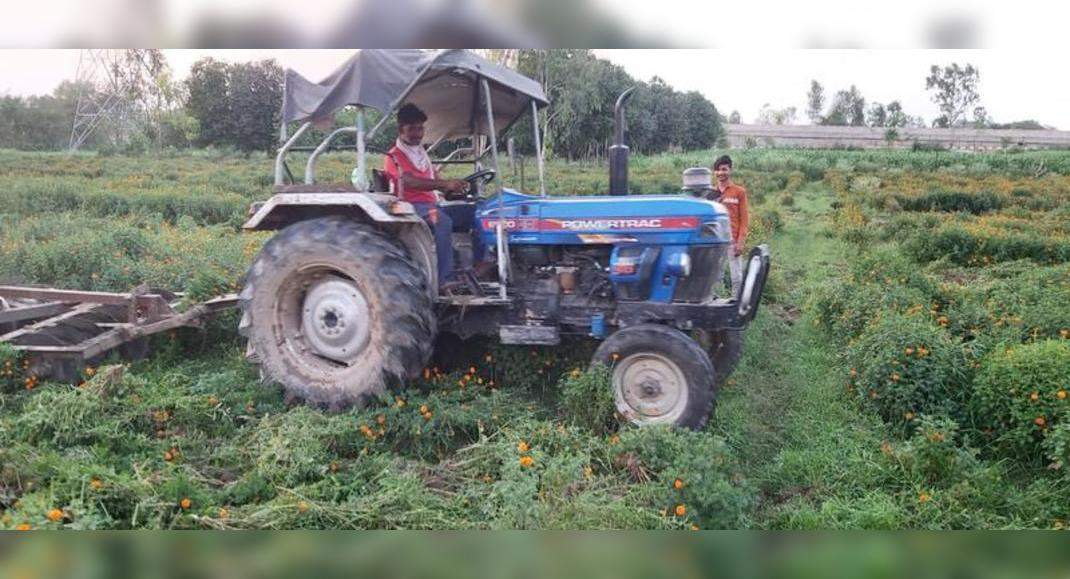GURUGRAM: Jaswinder Singh from Jind’s Ahirka village has been on the phone for days trying to contact flower distributors across NCR cities.
But none of them has responded.
His produce of marigold and lilium has found no takers in the smaller local markets as well.
“Debt and hunger will kill us first, not Covid.
This is the second year that I have incurred heavy losses, as there are no buyers for my flowers.
Last year in May, I suffered a loss of about Rs 3 lakh.
I made some money around October and that was enough to buy new seeds.
But this year, I have already faced a loss of over Rs 1 lakh per acre.
I have no option but to destroy the flowers because harvesting them will cost a lot,” 50-year-old Singh said, adding that he had hoped the demand would go up this April.
But with public gatherings and events like weddings, corporate seminars and religious ceremonies getting cancelled or deferred because of the second wave, the business has hit a new low.
Places like Jind, Rohtak, Panchkula, Kurukshetra, Nuh and Rewari are among the worst affected in the state with each flower grower facing a loss of Rs 1 to Rs 3 lakh per acre.
There is no dedicated flower market or mandi in the entire state.
Usually, the produce is picked up by distributors and wholesalers from designated spots and centres and then taken to Ghazipur mandi in New Delhi.
Flowers from Haryana, Punjab, Uttar Pradesh, Himachal Pradesh, and Rajasthan are sold in this market as well.
But for the past few months, there has hardly been any crop lifting and the market rates in Haryana are low.
For instance, the price of 1 kg marigold is about Rs 25 at this time of the year.
But currently, the rate is Rs 5 per kg.
“Taking the produce around in search of buyers means more money.
In the end, even if I am lucky to find someone who is interested in the distress sale, the prices on offer will be so low that it will hardly make any sense,” said Mohammed Saleem, a farmer from Kaithal.
Since the first lockdown in 2020, his losses have added up to Rs 10 lakh.
Around 10,000 farmers grow flowers across the state and the total area under cultivation is about 6,000 hectares.
According to officials, the government plans to add another 870 hectares under floriculture soon.
Officials in the state horticulture department admitted there is a crisis but added that hardly anything can be done at this time.
“It won’t be an exaggeration to say that floriculturists have been facing huge losses since last year.
Flowers don’t come under ‘essential’ goods category and therefore, there is restriction when it comes to transportation in case of lockdowns and curfews.
Although we have written to the government on multiple occasions seeking support for the growers, no concrete decision has been taken so far.
We are hoping that the government will announce something soon,” said a senior official in the horticulture department.
Mostly marigold, gladiolus, lilium and chrysanthemum are grown in Haryana.
Flower harvesting is usually done between September and April with October-November and April-May periods being crucial for the business.
According to traders and Ghazipur mandi officials, the share of flower business from NCR districts, including Gurgaon, Nuh, Rewari, and Sonipat, alone accounts for Rs 700 crores each year.
Since last year, the amount has been almost half of that.
Despite being an important source of income, no revenue data is available for the flower business in the state.
All transactions are clubbed under the horticulture division that also includes fruits and vegetables trade.
The Mukhyamantri Bagwani Bima Yojana, an insurance scheme announced by the state government earlier this year, does not have any provision for flower growers.
It covers 20 crops, of which 14 are vegetables and the remaining are fruits.
“It seems that the government does not consider us as farmers,” said Irshad from Punhana in Nuh.
It is only recently that the Haryana State Agricultural Marketing Board is working with the Gurugram Metropolitan Development Authority (GMDA) to launch a dedicated flower mandi in Sector 52 of Gurgaon.
Once ready, officials said, it would account for a yearly trade of almost Rs 300 crores.
Time is crucial for these growers as once harvested, flowers have to reach buyers within a few days.
Not finding customers on time, many farmers said they have been forced to turn their harvest into cheap fodder.
Most flower growers tend to mixed crops on their fields, which include seasonal flowers and fruits or vegetables.
But distressed with the low demand, some are contemplating shifting to cultivating just fruits and vegetables.
“I will have to look for other options.
We keep hearing about a possible third wave of Covid and if that hits, this year will also be a washout.
Weddings and religious gatherings have been cancelled or deferred and even if such events are allowed later in the year around Diwali, the demand is likely to be tepid.
In any case, one cannot expect to recover the input costs this year,” said Amarjeet Singh, a farmer from Kurukshetra.


